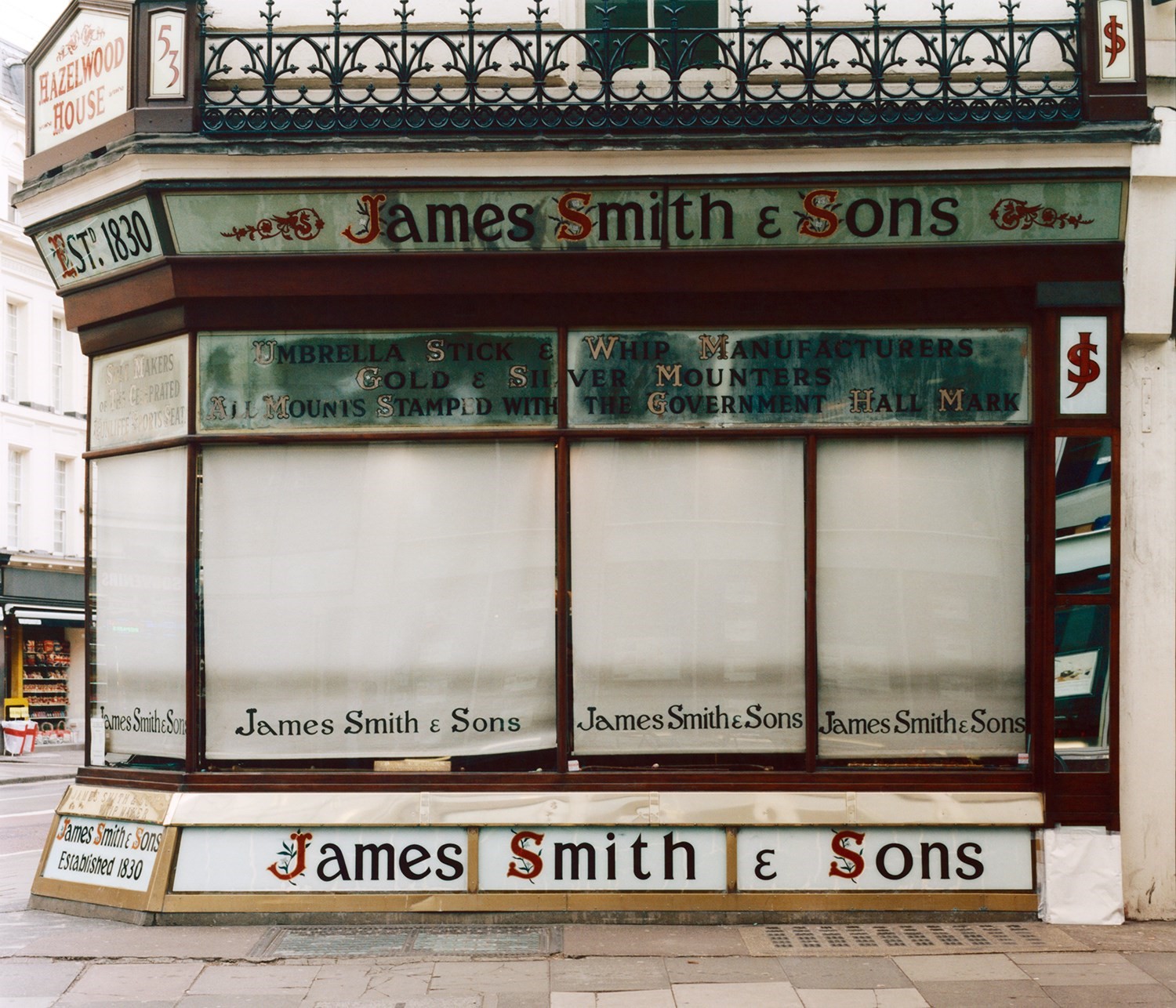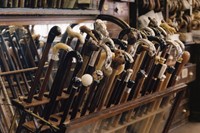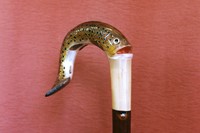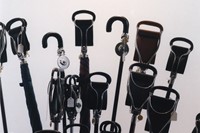Millions of people pass the façade of James Smith & Sons every day, curiously peering into the wood-panelled windows lined with umbrellas of almost every conceivable variety. Some go through the heavy doors, intrigued by the museum-like categorisation of these hand-crafted items, whilst others remain blissfully mystified as their buses glide by. Even black cab drivers taking ‘The Knowledge’ are expected to know it when it pops up on their exams. It’s not surprising, considering the iconic New Oxford Street shop has witnessed two world wars and the ever-expanding hoi polloi of central London whilst remaining largely unchanged from its original 1857 design.
Nestled in the middle of central London traffic, the umbrella specialist now stands as a flourishing relic of Victorian commerce and craftsmanship – largely thanks to the fact that the family didn’t think it would last, and therefore refused to invest in renovations. It’s straight out of the pages of Dickens, complete with the gentlemanly custom that still sees everyone in the shop addressed by their prefixed surnames. A downstairs workshop still operates, producing the handmade umbrellas that the firm pioneered and subsequently built its world-renowned reputation on. Meanwhile upstairs, tokens of the Smiths’ worldly travels decorate the upper halves of the walls — Tasmanian antlers, bamboo sculptures from Sumatra, and a majestic Bornean pear lending an air of 19th century gymkhana to the joyfully cluttered space. Rarely granting access to press, we took a tour of the London institution to learn the art of umbrellas just in time for those infamous April showers.
The Shop
Almost a decade before Queen Victoria sat on the throne, London’s umbrella market was booming (it was the only solution to Britain’s idiosyncratic weather) and James Smith set up shop in London’s Foubert Place, today tucked away behind Liberty. The founder’s son soon took over and moved the shop closer to Savile Row, where it served Gladstone, Bonar Law, and Lord Curzon, before finally settling on New Oxford Street in 1857 as part of a government scheme to regenerate the area with commercial buzz.
The Smith family lived above it, while the shop – a former dairy (the area was formerly known for dairies and bakeries) – sold its umbrellas through an open window to customers on the street. Below the shop floor is a workshop that is still quietly producing the wooden shafts and metal frames, employing almost 20 people of varying ages. There’s also a door that opens to an arched cave that sits beneath street level, echoing the sounds of footsteps and the conversations of passersby. Today, the shop’s walls are eclectically covered in framed umbrella-related photographs and imagery. One 18th century cartoon, Good Manners in Umbrellas, shows how not to survey a shop window – by using your umbrella to highlight your interest and resultantly smashing the glass.
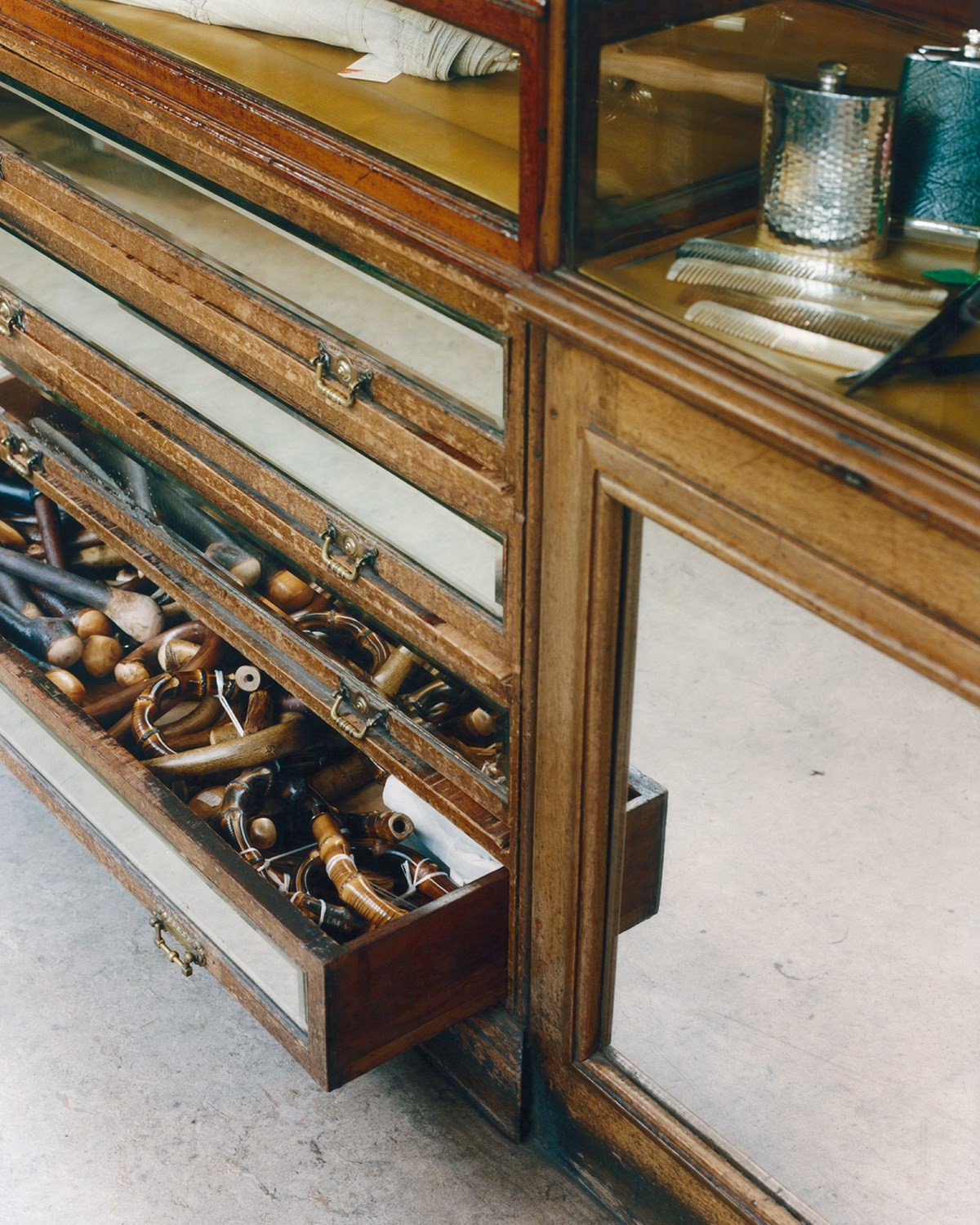
The Story
“We’ve always been known as a gentleman's house,” says Mr Harvey, the fifth generation Smith who currently presides over the business. “It wasn’t until about 50 years ago that we started to cater to ladies, too.” During his tenure, Mr Harvey has introduced much more than ladies’ umbrellas – there’s now a range of modern styles, from expandable everyday brollies, to exotic one-offs crafted from ostrich leather and snakeskin. When the first Mr Smith founded the business, walking sticks were an essential gentleman’s accessory and umbrellas were substantially larger and heavier, a result of their whalebone and brass construction. They were carried almost exclusively by coachmen and doormen. Jonas Hanway, the 18th-century fashionista, caused an uproar when he was the first Londoner to carry an umbrella — crowds mobbed him for what they perceived to be putting them out of their jobs.
In light of Hanway, some years later James Smith Snr. pioneered the fox frame, a lightweight alternative to the bulkier styles before it. Metal was used instead of brass, and innovation was achieved by Smith when he created curved ribs, which increased agility without increasing weight. Each of the wooden shafts would be sourced from the various plantations in the South East, the remaining few still providing wood to the workshop. The umbrella biz was a waning interest, though – he moved to Tasmania with two his sons to take up farming. It was only until 1930, when his great-grandson Mr Mesger moved back to London to return to the business.

The Umbrellas
Almost every imaginable umbrella available is at James Smith & Sons. From those with quirky animal heads, to ones with antique ivory canes, and dramatically long ‘country umbrellas’ featuring rustic raw wood handles. “What we’re known for,” says Mr Harvey, “is the London umbrella: a slim black rolled umbrella with a cane handle.” This style became fashionable in the 1870s, populating urban streets until the late 1950s. Since then, there’s been a demand for more colourful styles – particularly amongst women. Mr Harvey points out that The Queen’s clear PVC umbrella, usually finished with an edge of colour to match her oft-monotoned outfits, was designed by Mary Quant – simultaneously allowing her to see everyone and everyone to see her.
There’s also much care that goes into maintaining an umbrella. It should always be rolled so that the flaps are not trapped; if you carry it over your arm, point it away from you so you don’t get your legs wet, and always hold it against the wind. According to one employee, Mr Naisbitt, the idea that opening an umbrella indoors causes bad luck is an urban myth invented by an umbrella salesman. As it turns out, the best way to dry an umbrella is to leave it open indoors. When wet and left closed, it begins to rot - therefore inspiring frequent custom to the local umbrella shop. Despite this, a large horseshoe adorns the ceiling of James Smith & Sons – just in case. In the words of Mr Naisbitt, “We’ve been going for quite a while, so we can’t have been that unlucky.”
